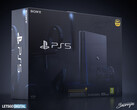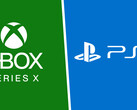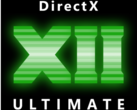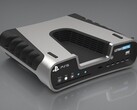During Sony’s Playstation 5 spec unveiling, Sony made much of the fact that the PS5’s GPU was more “agile” than the competition. The logic they offered was that, because GPU clockspeeds are tied to more than just the shader cores, higher clocks mean higher throughput across the chip, which can offset the lack of hardware shader resources.
This was an arrow shot right across Microsoft’s bow: Redmond, days earlier, had revealed the Xbox Series X’s immensely powerful 12 TFLOP GPU, the fastest GPU AMD has ever made. The 52 CU part features 3328 shaders and runs at 1800 MHz, right in line with what we’ve seen in other Navi parts like the RX 5700. It’s backed by GDDR6 memory that delivers 561 GB/s of bandwidth. Sony, in contrast, unveiled a much more conservative GPU for the Playstation 5, with 36 CUs (the same number of shaders as the RX 5700) tied to 448 GB/s memory.
Sony’s part, however, operates at a much higher 2.23 GHz max clock speed, which allowed the company to claim that it delivers over 10 TFLOP of compute, just fifteen percent behind the Xbox Series X. Reading between the lines, Sony’s claim that high clock speeds matter more than raw hardware resources implies that the performance gap between the PS5 and Xbox Series X might be even narrower than 15 percent.
This is misleading for two key reasons. For starters, the PS5 only delivers 10 TFLOPs of notional compute power when it’s running at its maximum boost frequency. Sony themselves have asserted that clockspeeds will be pulled back depending on power draw, meaning that there will be scenarios where the PS5 delivers less. The Xbox Series X, in contrast, runs at a rock solid 1800 MHz, subject neither to thermals nor power draw.
The second reason has to do with what we already know about Navi clockspeed scaling. RDNA parts do not scale well at higher clockspeeds. Overclocking tests on the RX 5700 XT-close analogue for the PS5’s GPU-indicate that a massive 18 percent overclock from stock up to 2.1 GHz resulted in just a 5-7 percent improvement to frame rates. This is the exact opposite of Sony’s claim, which implies better-than-linear performance scaling with clockspeeds. RDNA2 is an iterative update to the first-gen RDNA architecture found in Navi 10 parts. This makes it very likely that the PS5 will also behave similarly: upping the clocks to 2.2 GHz won’t magically offset the substantial difference in hardware allocation between the Series X and the Playstation 5 GPUs.
This leads to the sobering conclusion that in real-world workloads, the PS5 might be 30 percent or more slower than the Xbox Series X. We don’t expect the world’s fastest SSD or individual raindrop audio rendering to offset that.
Sale off - Buy Xbox One S now on Amazon
Sale off - Buy PlayStation 4 Slim now on Amazon
















